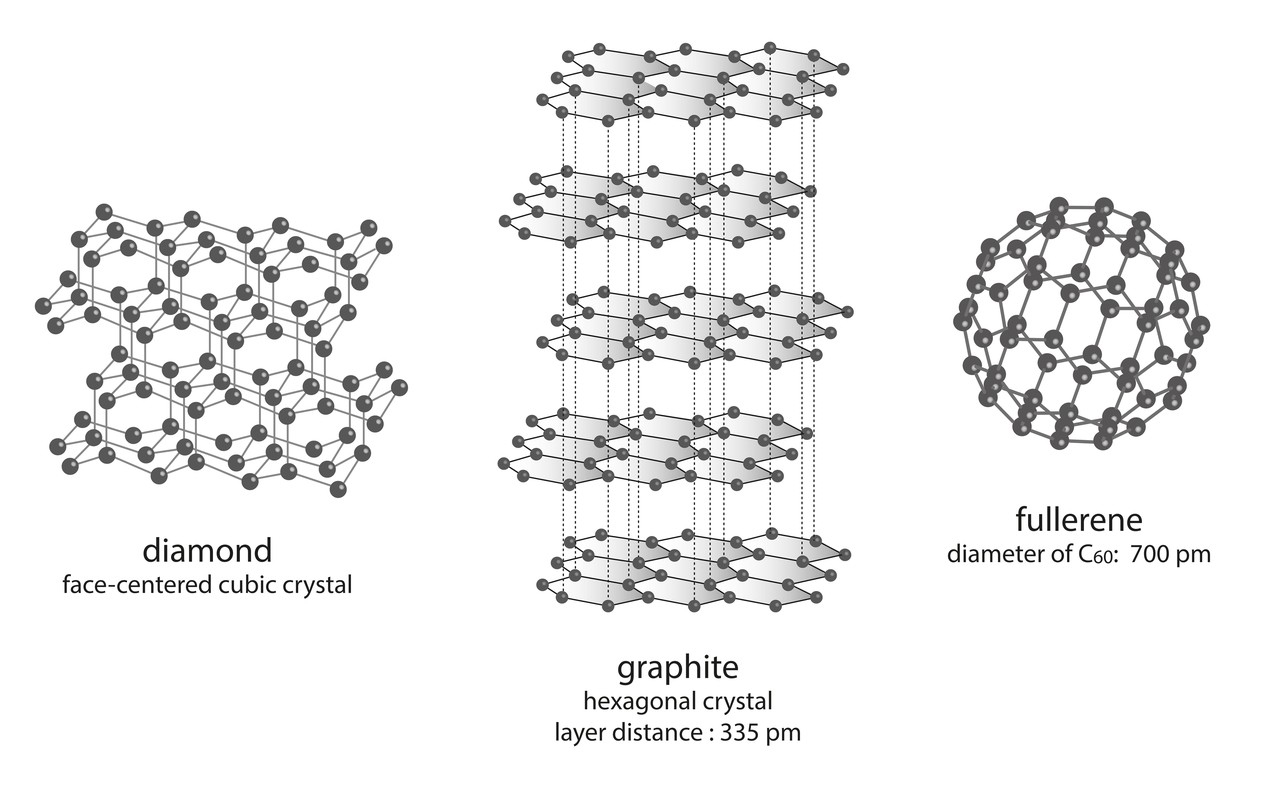Fullerene C60, also known as buckminsterfullerene or simply “buckyball,” is a molecule composed of 60 carbon atoms arranged in a spherical structure resembling a soccer ball. Its unique shape and properties have led to a wide range of potential applications in various fields.
Applications of Fullerene C60:
Material Science and Nanotechnology: Fullerene C60 has remarkable mechanical, electrical, and thermal properties. It can be used as a building block in the development of nanomaterials, nanocomposites, and nanodevices. Its hollow structure can be used to encapsulate other molecules or ions, making it useful for drug delivery and catalysts.

Medical and Pharmaceutical Applications: Fullerene C60’s unique structure allows it to form stable complexes with various molecules, which can be utilized in drug delivery systems. It has been explored as a potential carrier for delivering drugs to specific cells or tissues. Additionally, research has shown that Fullerene C60 possesses antioxidant properties, which might have implications in the field of medicine.
Solar Cells and Photovoltaics: Fullerene C60 and its derivatives have been employed as electron acceptors in organic solar cells. When blended with organic semiconductors, they can enhance the efficiency of solar energy conversion by improving electron transport and exciton dissociation.
Electronics and Semiconductors: Fullerene C60 can be used as a material in organic electronics and semiconductor devices. It can act as a semiconductor, helping to create flexible and lightweight electronic components. Its electron-accepting properties make it useful for organic photodetectors and organic field-effect transistors.
Catalysis: Fullerenes, including C60, can serve as catalysts in various chemical reactions. Their high surface area and unique geometry can enhance catalytic activity in processes such as hydrogenation and oxidation.
Biomedical Imaging: Fullerene-based nanoparticles have been investigated for use in various imaging techniques, including magnetic resonance imaging (MRI) and fluorescence imaging. These nanoparticles could potentially improve contrast and help visualize tissues and organs more effectively.
Environmental Applications: Fullerene C60 has been explored for its potential in water purification and environmental remediation. Its unique structure and reactivity make it suitable for capturing and degrading pollutants or contaminants in water and soil.
Superconductors and Conductive Polymers: Fullerene C60 can be integrated into conductive polymers to improve their electrical properties. It has also been studied as a dopant in superconducting materials to enhance their superconductivity at higher temperatures.
Cosmetics: Fullerene C60’s antioxidant properties have led to its incorporation into cosmetic and skincare products. It is believed to help protect the skin from oxidative stress and UV damage.
Research and Nanomaterial Synthesis: Fullerene C60 serves as a fundamental building block in nanotechnology research. Its unique properties and behavior at the nanoscale provide insights into the behavior of other nanomaterials and can be used as a model system for studying nanoscale phenomena.
It’s important to note that while Fullerene C60 holds promise in these various applications, some challenges still need to be addressed, such as scalability, cost-effectiveness, and potential environmental impacts. Ongoing research continues to explore ways to harness the unique properties of Fullerene C60 for practical applications across multiple fields.
